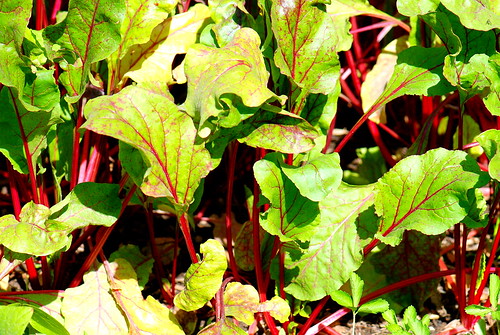July means winter around here (it’s still hard for me to get used to this), so we are looking at winter crops of mostly roots and thick leafy greens. July’s list is similar to what to plant in June, except as the cold rainy days move in, more tender vegetables move out. June’s list featured 12 brave winter vegetables, where as July brings in only 9. Oh well, we could be under layers of snow, I suppose :).
1. Beetroot

Descanso Gardens – Autumn 2009 by Rockin Robin
Where: Sow in garden
Harvest: from August – September

